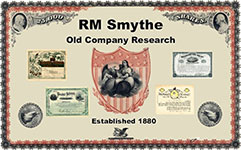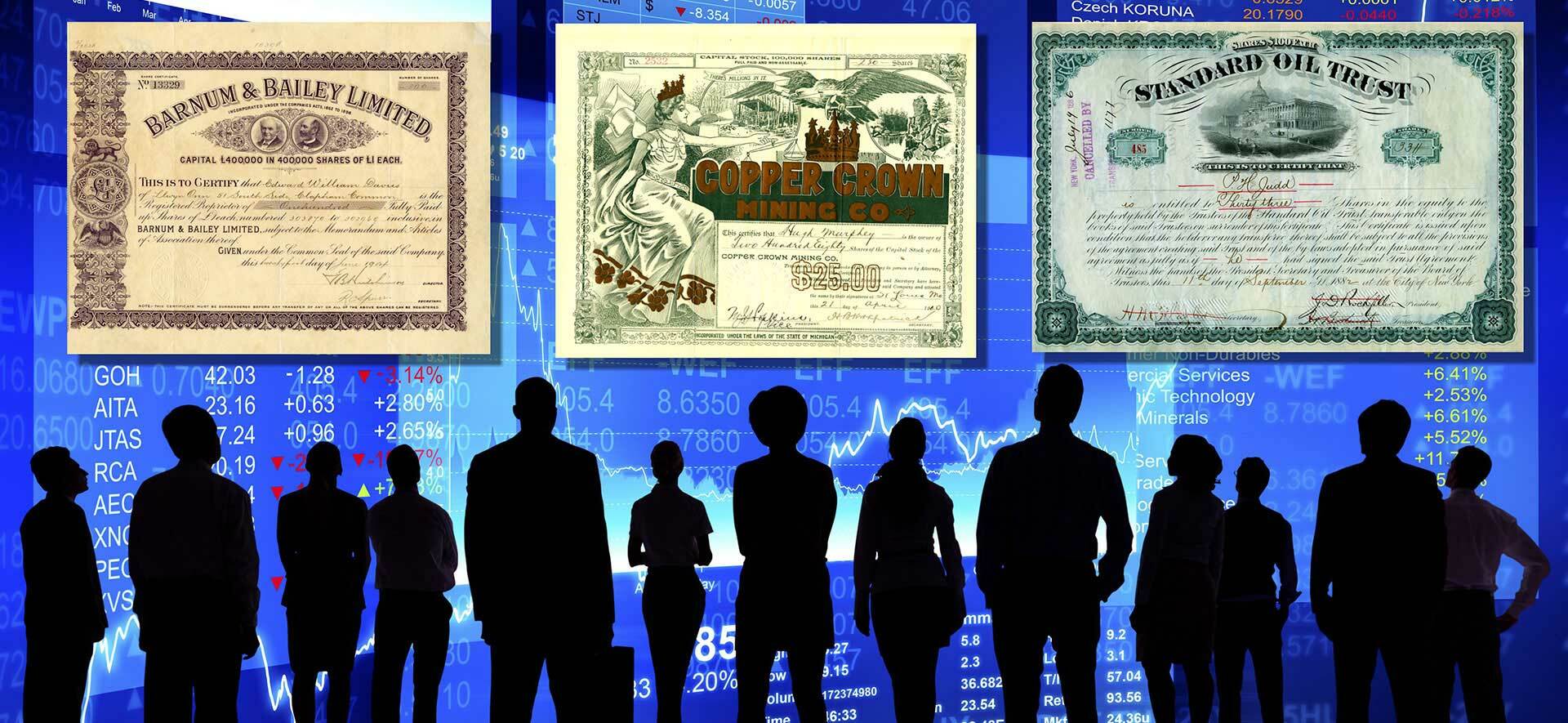Beautifully engraved check from the Riggs National Bank - Washington D.C. issued in 1900 - 1920. This historic document was printed by Stephens Litho and Eng. Company of St. Louis and has an ornate border around it with a vignette of the famous Riggs Bank Building. This check is hand signed and is over 80 years old. Riggs Bank History 1836 William Wilson Corcoran opens a note brokerage house---an early form of bank. 1837 Businessmen from New York and abroad, including former neighbor Elisha Riggs, shield the Corcoran brokerage house from collapse during the economic panic. 1840 Corcoran and George Washington Riggs, Elisha's son, form Corcoran Riggs, a partnership that offers depository and checking services. 1842 States-rights Democrat John Tyler is the first President of the United States to bank at Corcoran & Riggs. 1844 The U.S. government selects Corcoran & Riggs as the sole federal depository in Washington. 1845 Corcoran & Riggs finances the invention of the telegraph by Samuel Morse. Corcoran & Riggs purchases the buildings and assets of the Washington branch of the defunct Second Bank of the United States, located across the street from the Treasury. Corcoran & Riggs invests heavily in railroads and land, contributing to the nations push westward. 1847 Corcoran & Riggs lends $16 million to the U.S. government for the Mexican War and subsequently covers the loan by selling bonds to London financial houses. As the first sale of American securities in Europe since 1837, this transaction bolsters the credit of all American bankers. 1850 Senators Henry Clay, John C. Calhoun and Daniel Webster bank at Riggs. 1853 U.S. Army Corps of Engineers opens Corcoran & Riggs accounts for construction of the Washington Aqueduct and the extension of the Capitol. 1854 Corcoran retires to devote his life to private investments and charitable causes; George Washington Riggs takes over the bank under its new name, Riggs & Co. 1861 Abraham Lincoln opens an account at Riggs shortly before Civil War hostilities begin, only weeks after Confederate President Jefferson Davis closes his account. 1865 Instead of accepting a charter under the new national bank act, Riggs & Co. remains a private bank. This decision accounts for the bank's stability in the aftermath of the Civil War. 1868 Upon the request of Secretary of State Seward, Riggs & Co. supplies $7.2 million in gold bullion to the U.S. government to purchase Alaska from Russia. 1873 Financial panic throws banking houses across the nation into confusion, yet Riggs deposits double within the next three years. 1881 Following the death of George Washington Riggs, Charles Carroll Glover becomes the dominant force in the bank. 1896 Riggs & Co. accepts a national banking charter. The Riggs National Bank elects its first board, sells stock, and shifts its focus from specialized investment services to general banking services for a large clientele. Glover becomes the first president of the bank. 1900 Lawrason Riggs, the last member of the family associated with the bank, retires from the board of directors. With deposits of more than $5 million, Riggs is twice as large as any other bank in the District of Columbia. Riggs issues stock to National City Bank, the largest New York bank, to forge a profitable alliance. 1902 Successful American reports: "The Riggs National Bank is to Washington as the Bank of England is to London." 1904 Headquarters at 1503 Pennsylvania Avenue opens. It features a Ladies' Department designed to meet the special needs of women, including American Red Cross founder Clara Barton and suffragist Susan B. Anthony. 1907 Even though a panic creates severe money shortages, Riggs pays an extra dividend to its shareholders. 1908 Charles Glover presents his plan for economic relief to Congress. This serves as the foundation for a series of financial reforms, including the establishment of the Federal Reserve System in 1913. 1915 Moody's financial monthly reports that Riggs has been for years the favorite bank of army and navy officers, through whose travels its name has been carried to all parts of the world. It has been said that in the Far East the Riggs Bank is the best known American banking institution. 1919 General John J. ("Black Jack") Pershing salutes from horseback during his victory parade. He later joined Riggs' Board of Directors. 1920 Riggs takes advantage of provisions in the Federal Reserve Act that allow national banks to accept savings deposits and establish a trust department. 1921 Former Assistant Secretary of the Treasury Milton E. Ailes succeeds Glover. 1922 Following consolidations with two local banks, Riggs opens its first four branches. 1925 After the sudden death of Milton Ailes, Robert V. Fleming becomes Riggs' president at the age of 35. 1928 Riggs merges with Farmers and Mechanics Bank of Georgetown, which a Riggs family member helped found in 1814. 1929 Whereas over-speculation strains the resources of most banks, Riggs does not lose any assets because of bad loans or investments following the Great Crash. 1931 Riggs Bank provides $500,000 in cash to Perpetual Savings and Loan of Washington. Depositors and other banks match this sum to end runs on Perpetual. 1933 Fleming advises Roosevelt regarding the structure of the newly established Federal Deposit Insurance Corporation. 1935 The American Bankers Association elects Fleming its president. 1939 Total assets are $119 million, compared to $57 million when the Great Depression began. During those years, 40 percent of all U.S. banks failed. 1941 Robert Fleming makes a national broadcast appeal for war bond sales; by 1945 Riggs will have sold $233 million in war bonds. 1942 The Bureau of Standards stores their most precious items -- standards of length and mass made mostly of platinum --in the vaults at the Chevy Chase Branch on Connecticut Avenue for safety against air raids. 1943 Riggs provides the accounting facilities for the Office of Price Administration, which distributes ration coupons for basic commodities such as sugar, gasoline, meats, and shoes. 1946 Riggs begins to emphasize GI, home, auto and other consumer-oriented loans as the post-World War II boom begins. 1947 Riggs processes a World War II loan repayment of $50 million, the largest check ever drawn on a District bank. 1948 Riggs' general ledger books are done by machine instead of by hand for the first time. 1949 Nationally syndicated newspaper columnist Bob Considine calls Riggs "just about the closest thing we'll ever have to a Bank of the United States." 1950 Riggs' International Division develops a special relationship with the new International Monetary Fund and World Bank; most embassies are now customers. 1951 Korean War commander Matthew B. Ridgway is a Riggs customer, continuing a military tradition which includes William Tecumseh Sherman, Ulysses S. Grant, Douglas MacArthur, Chester Nimitz and Dwight D. Eisenhower. 1958 Riggs now has 13 branches, after recent mergers with Washington Loan and Trust and Lincoln National Bank. 1961 Riggs sponsors its first television program, World Concert Series, broadcast Sundays at 2:00 p.m. Guests include Arthur Rubenstein and Marian Anderson. 1962 Following the Cuban Missile Crisis, Riggs immediately implements a new plan to store bank records "in vault storage space in a mountainous area distant from the City of Washington." 1963 The Fleming era ends the same year that Riggs opens its new corporate headquarters. Lewellyn Jennings, former deputy Comptroller of the Currency, takes over as Chairman of the Board. The computer begins to service customer accounts. 1967 Riggs and Data Computer Center, Inc. (renamed Riggs Computer Services, Inc. in 1970 and absorbed into the bank in 1972) established to provide automated accounting services for business customers. 1969 Riggs opens its first TV Drive-in windows using television cameras, audio systems and pneumatic tubes at its Chevy Chase Branch. 1970 Riggs installs its first computer system that enables staff to view a customer's account on a monitor. 1971 The Advertising Club of Metropolitan Washington awards its top honors to Riggs for its first venture into television advertising---a ten-second ``Bank-by-Mail" commercial. 1972 Riggs' first overseas branch opens in Nassau, Bahamas to serve the Eurodollar deposit and loan requirements of its customers. 1973 Upon the invitation of the British Embassy, Riggs opens its first facility with a foreign embassy in Washington. Luis F. Corea, Riggs' Senior Vice President in charge of the Foreign Department, receives the National Order of Merit from the French government at its embassy in Washington in recognition of his contributions in banking. 1976 Riggs introduces 24-Hour teller machines at its branches. Customer usage is twice the national average for similar equipment. 1980 Riggs becomes Washington's first and only bank to open a branch in London. Riggs National Corporation is formed as a holding company including all companies sharing the Riggs identity. Riggs International Banking Corporation (Edge Act Bank) opens in Miami to focus on serving non-U.S. citizens. 1981 Joe L. Allbritton becomes the first active chairman of Riggs National Corporation. 1982 When federal deregulation permits bank money market accounts, Riggs gains a greater share than any other District bank, exceeding the $1 billion mark within three years. 1983 ``The most important bank in the most important city in the world" provides the theme as Riggs launches a long-range campaign emphasizing its service capabilities and its commitment to customers. 1984 Riggs purchases the Anglo-Portuguese Bank to form Riggs Bank Europe. 1986 Riggs joins CIRRUS, a nationwide system of 10,000 automatic teller machines, thereby providing customers access to their accounts at more than 12,500 sites. Riggs opens its first branches in the suburbs as The Riggs National Bank of Virginia with the acquisition of Guaranty Bank and Trust. Riggs dedicates its newly-restored building on 1503 Pennsylvania Avenue to W.W. Corcoran. 1987 Riggs Bank launches private banking to give clients a one-on-one relationship with an experienced financial advisor. Riggs expands into Maryland as the The Riggs National Bank of Maryland with the acquisition of First Fidelity Bank of Rockville. 1988 The U.S. Treasury Department awards Riggs the contract to consolidate its separate collections systems. CA$HLINK replaced cash payments with electronic transfers and streamlined the government's cash management system, resulting in significant cost savings to the government. At the request of the State Department, Riggs opens a branch at the U.S. embassy in London. Riggs Investment Management Corporation (RIMCO) is created as a subsidiary of Riggs Bank to manage all the money in the trust department and new clients in the institutional, non-profit and pension markets. 1989 Farmers and Mechanics Branch in Georgetown is restored to its original neo-classical style, particularly its interior details and gold dome. 1990 Riggs Bank forms the Financial Services Group by merging private banking, RIMCO, and the trust department to enhance customer service. Riggs purchases certain assets and assumes the deposits of the National Bank of Washington. 1993 To date, at least twenty-one First Families have banked at Riggs. 1996 Riggs builds upon its reputation in embassy banking in Washington and extends its banking services to non-U.S. embassies in London for the first time. Customers can meet nearly all their banking needs, including investment sales, by simply placing a telephone call with the establishment of RiggsDirect. While on an economic development mission to Bosnia and Croatia, Paul Cushman III, head of the International Division, dies in a plane crash with U.S. Commerce Secretary Ronald Brown. 1997 Riggs & Company is formed, bringing together the services of RIMCO and the Riggs Financial Services Group. The subsequent purchase of J. Bush & Co., Incorporated as well as alliances with life insurance agents and brokers and Peat Marwick (KPMG) enable Riggs to bring a comprehensive range of financial services to its clients. Riggs offers a full-range of banking services, including investment sales, on the web. 1998 Riggs Capital Partners is founded to invest in emerging companies, with particular emphasis on the Washington, D.C. area's vibrant technology market. 1999 Riggs Investment Corp., a broker/dealer, is established; its Investment Centers, located at several branches, provide planning for reduction of taxes, retirement, college education, and wealth building and preservation. Upon the request of the State Department, Riggs Europe opens a branch in Berlin, the capital of a reunited Germany. New eagle trademark is introduced to broaden Riggs' identity as a provider of a full spectrum of financial services. U.S. Treasury Department selects Riggs Bank to redesign and manage the CA$HLINK cash management system, the largest deposit and cash reporting system in the world. Riggs consolidates and relocates all international banking functions to a newly-restored complex named the Paul Cushman III International Financial Center. 2000 Riggs Investment Banking is launched, offering corporate clients access to a variety of capital markets and financing opportunities. Riggs & Co. International opened two new offices - one in London and the other in Jersey (Channel Islands)- with a customer-built state-of-the-art information technology platform that provides customers with sophisticated, integrated information on their banking arrangements and investment portfolios.
Riggs National Bank - Washington D.C. - 1900 - 1920 - Famous Bank Vignette
MSRP:
$19.95
$14.95
(You save
$5.00
)
- SKU:
- rignatbanwas
- Gift wrapping:
- Options available in Checkout










